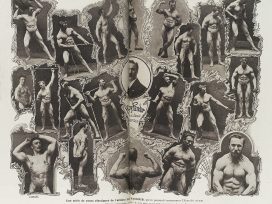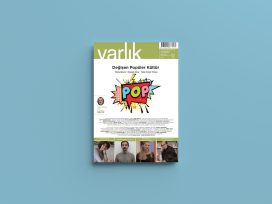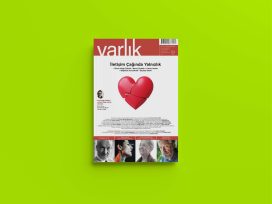“I am using an apparatus which is constructed to take advantage of a certain human weakness, an apparatus with which I can sway my audience in a highly emotional manner – to laugh, scream with fright, smile, believe in fairy tales, become indignant, be shocked, be charmed, be carried away or perhaps yawn with boredom. Thus I am either an imposter or, in the case where the audience is willing to be taken in, a conjurer.”
So wrote the recently deceased Ingmar Bergman in 1957, in connection with the film manuscript of Wild Strawberries in the same year.[1] For Bergman, a film begins with something vague, often a hazy event that leaves behind a mood, a mental state with fertile associations. Bergman explained that he wanted to make films “about the conditions, tensions, pictures, rhythms, and characters” that were significant to him. The son of a priest, Bergman was increasingly captivated by religious issues – “it goes on every hour of every day”. However, according to him, not on a sentimental, emotional level, “but on an intellectual one…”
The American critic Jonathan Rosenbaum writes, “If the French New Wave addressed a new contemporary world, Mr Bergman’s talent was mainly devoted to preserving and perpetuating an old one.” However, parallel to this, we should remember that Bergman’s aforementioned film Wild Strawberries – along with Michelangelo Antonioni’s L’Avventura (The Adventure, 1960), Federico Fellini’s 81Ž2, and Alain Resnais’ Last Year at Marienbad – is the most outstanding example of modern European film from the 1950s and 1960s. Based on postwar Italian neo-realism, as well as the European avant-garde of 1910 and 1920, these became films that revolutionised the language of film and revealed new ways of looking at the world.
For example, in the film The Eclipse (1962), the also recently deceased Antonioni dealt in tense border situations and dehumanized landscapes – e.g. in the film’s stock-market scene. He created vacuums and landscapes that see the characters and action transformed into an abstract interior. In The Adventure, the displacement of the bodies is more central than any actual sequence of events – thus they search round the island for the missing woman. The banal quotidian vacuum is highlighted in his films. Antonioni went to great lengths to show bodily fatigue, longing, waiting, and desperation. Cinematically, the characters’ inner selves were illustrated through bodily behaviour. He showed what came after the experiences, when everything that could be said had been said. Antonioni did not mourn the world’s communication problems, but saw the world as a colourful place, so very full of all possible colours. People, on the other hand, were still colourless and tasteless – and so the world awaits “its inhabitants who are still lost in neurosis”.[2]
Such film auteurs (film artists)[3] tackle much more significant problems than communication problems and loneliness. It’s more about thought and reflection. But as the philosopher Martin Heidegger wrote in What is Called Thinking,[4] “Man can think in the sense that he possesses the possibility to do so. This possibility alone, however, is no guarantee to us that we are capable of thinking.”
So are we able to think through film? Of the aforementioned films from the 1950s and 1960s, perhaps the most significant and radical is the auteur film Last Year at Marienbad. Call it a manifestation of the anti-film, but it created new, active audience participation. Alain Resnais created this masterpiece with scriptwriter Alain Robbe-Grillet. This is film art based on montages of the new “time images”, (a term coined by the philosopher Gilles Deleuze) – new film art that dwells on time itself, in place of traditional action films and linear stories.
Many illusions were shattered by the Second World War – one sees this expressed in neo-realism. And with the advent of the Media Society and market liberalization, it became increasingly difficult to distinguish the real from the imaginary. Resnais and Robbe-Grillet were not the only ones wanting to “expand the system of flashbacks and hypotheses into a generalization of the mental image”[5]. These films are open to the active, thinking cineastic audience.
Last Year at Marienbad opens with a series of takes of the baroque interior décor of a former castle – now a luxury hotel. A man’s voice is intermittently discerned, when it is not drowned out by organ music. After a time, we see people around the lounge. The main characters are Man X and Woman A (and her husband, Man M). X is trying to tell A what happened between the two last year at a similar place. Fragments of conversations and the different games of the tuxedo-clad men blend in. The film alternates between flashbacks of X’s memories, (or are they A’s?), of the rendezvous at the statue, of the garden, their “escape” from her husband. But X’s memory becomes hazy when he reaches the climactic “event” of their previous meeting – was it a rape, a sexual encounter, or a murder?
What do we do with a film that is virtually impossible to interpret? Like David Lynch’s new film Inland Empire, Last Year in Marienbad is based on a series of confusing and complicated scenes and tableaus. Image and sound can seem conflicting; flashback can appear real and unreal.
There are a remarkable number of films that are related to Last Year in Marienbad. For example, the film is connected to the aforementioned Antonioni’s The Adventure; characters searching in all directions, the story’s uncertainty. Furthermore, the game in the lounge is evocative of Bergman’s The Seventh Seal (1957), where the knight plays chess with death. Resnais and Robbe-Grillet were probably inspired by Hitchcock’s Vertigo (1958) and North by Northwest (1959), and Stanley Kubrick no doubt let himself be further inspired in The Shining (1980).
Resnais and Robbe-Grillet believe the film has no “solution”, and that all interpretations are equally valid. The diversity of potential interpretations is impressive: Some critics postulated that Last Year in Marienbad centres on memory, X’s recollective activities – that A was murdered by her jealous husband, and that X is trying to convince himself that it was not his fault. Or was it an attempt to re-write a traumatic memory because of the rape he had perpetrated? Or a dream-like delirium? Others interpret the film as an essay on story-telling, rhetoric, and communication. The more psychoanalytic reading identifies the castle’s enormous spaces as narcissism; the soundless shot as an expression of impotence; and the film’s three characters as incarnations of Freud’s id, ego, and superego, and a battle between the principle of lust and the death drive. And it doesn’t end there – further interpretations of a more symbolic nature see the castle as a graveyard due to the motionless characters. The film may also be regarded as a fable about Europe’s disappearing old aristocracy. A Norwegian version is provided in the comparison with Ibsen’s Byggmester Solness – based on the meeting arranged ten years later between Solness and Hilde, something which he was unable to remember. Even more significant are those who have interpreted Last Year in Marienbad as bourgeois civilization’s emergence into capitalist society, with its empty rules that oppress and constrain people to live inside a game, in a perpetual repetition of the same conversations and events.
But most of all, the film’s uneasy mystery revolves around the fear of the vacuum, barely concealed by the forced repetition of words and pictures. The film’s director and scriptwriter are obsessed with cataloguing things and events, changing perspectives, costumes and scenes. Every hysterical cry, perplexing moment, or dizzying flash points directly “into the abyss of humanity”.[6]
Such films provoke not just the thought of assessing possible interpretations, but perhaps also the thought of familiarizing oneself with the process by which these interpretations are assessed.
Frenchman Antonin Artaud (1896-1948) once regarded film as a form of neurophysical vibrations; the picture had to produce shock, neural waves that provoked thought, because thought “had not always existed”. And he was demanding: “For me, sexuality, oppression, and the subconscious have never provided sufficient explanation for inspiration or spirituality.”[7] We’re talking here about a steady rebirth of new thoughts, about nuanced thinking, about tearing up old immobility, an arousal where thought begins to see its essential thinking ability – more to acknowledge than to know and recognize.
Cinematic thought demands a “dissociative” power that introduces the embodiment of nothingness or gaps in the apparent. Especially by disconnecting pictures from one another, the use of multiple voices, internal dialogues, or often one voice inside another’s voice. Robbe-Grillet used the incomprehensible as a device, Resnais the indeterminate, and Jean-Luc Godard the incomparable. Concepts or approaches on a level with the mutability of modernity. The belief in the unity of montage was gone. One assumed that the interpretation itself was powerless: you cannot think the entirety, or, for that sake, an awareness of yourself – for the core of thought is forever being fossilized by rules and norms, pushed aside by changes in surroundings, and broken down by the unpredictable. The core of thought is therefore that which is always approaching, that which remains.
When the ambition is for thought to be film’s higher goal, it is best to show the functioning of thought. The filmmaker’s confusing images can therefore “stop” the world, tear up the commonplace, and shake up the visible. And I’m not talking here about MTV’s two-second image sequences. Rather it happens when filmmakers manage, on a sensory level, to provoke individuals to see something in the world that they regard as intolerable, and which is usually unimaginable. It is not because the world can sometimes seem unfair that one feels that thought is powerless. The intolerable is, in Deleuze’s words,[8] “no longer a serious injustice, but the permanent state of the banality of the quotidian”, the depiction of which Antonioni truly mastered.
But to know thought is not to write it off as powerless. This powerlessness is actually a part of thought itself. It is precisely here that thought begins – in the connection between the human being and the world, or with the intellectual, religious problem with which Bergman struggled.
However, many believe in a world beyond religion. And modern mass media gave us the dream society. Our time is characterized by a lack of belief in the world: something Nietzsche highlighted in 1888, by saying that the world had become a fable.[9] Many hardly even believe the events that happen to them, love or death. The world can take on the appearance of a bad film – and it’s not only 9/11 that has reminded us of that.
The issue is nevertheless about thought-provoking films, about whether the quality film provides a way back to the world of human beings, through what we see and hear. Some film auteurs focus on the body, or “the flesh”, as Francis Bacon would call it. Can these films accurately film belief in our world here and now? This “reversal” happened in philosophy, so why not allocate the task to film in our time? Way beyond the illusion-making of film, filmatic thinking – thinking in pictures – recreates belief in the real world.
From thought to belief? Yes, dear reader, at some point, the interpretative multiplicity of thought – as we saw it in Resnais’ film – should lead the abstractions of thought on to an, albeit temporary, foundation. Allow me therefore to end with a Godardian interpretation of this, of what the philosopher Gilles Deleuze would call “the belief in our world”. In the recently published Histoire(s) du cinéma[10] Godard points out a sentence between the film clips: “Don’t hurt yourself, because we’re all still here.” Here a collective “we” is uttered, the film speaks, staged with compassionately selected images. We, the seduced – or Bergman-enchanted – viewers are addressed with the gentleness of “angels”. Godard directs himself at the film’s story, reminds us that we are still here in the world, that we still belong to the progression of the story – and that as thinking presences, we do not want to let the story (or the film) be forgotten (to suffer a Heideggerian forgetfulness of being). This community, this extended hand unites the little stories of the lonely. Film images refer to the “togetherness of being” of thought and the human soul. A community of pictures, a community without limitations – like “two lovers in the sun”.
The wandering through thought’s essential nature, through the history of the world’s unruly abundance of experiences, practices, and thoughts (what many would describe as God) – in philosophy, or through the films of Resnais, Lynch, or many of the deceased film auteurs – brings together the thought, its absurd powerlessness, and the world. But instead of stepping out into a religious hinterland or mediocre media illusion-production, the challenge of thought is the ability to believe in the world.
Was this not precisely what Ingmar Bergman himself described in the scene in The Best Intentions (his script, 1991), when the queen of the castle tells the priest Henrik Bergman that she doesn’t believe in a god “up there”, but asks if it could be possible that God is among us human beings down here? Bergman’s father gives an affirmative answer.
[1] See Filmkunstere om film, Oktober publishers, 1995, 93.
[2] Ibid, 205.
[3] “Auteur” is the French word for originator or author. François Truffaut and Cahiers du Cinémas “politique des auteurs” from the 1950s emphasized that the very art of film should have absolute control over the production of a film.
[4] Martin Heidegger, Wass heisst Denken, Max Niemeyer Publishers, 1954, 1.
[5] See The Cinema of France, Wallflower Press, 2006, 192.
[6] See Laura Rascaloli, Ibid, 109.
[7] Artaud, Volume III, 47.
[8] Gilles Deleuze, Cinema 2, The Time Image, University of Minnesota Press, 1989 [orig. 1985], 170.
[9] See Friederich Nietzche, “How the ‘true world’ became a fable”, in Afguderneres ragnarock, Gyldendal, Denmark, 1993.
[10] Jean-Luc Godard, Historie(s) du cinema, Gaumont Vidéo, 4 DVD, 264m, recordings from 1995-98. Chapter 1, “Une Histoire Seule”. See also Cahiers du Cinema, July/August 2007.






